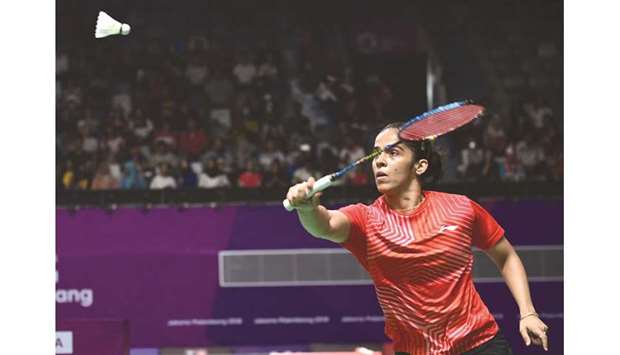Saina Nehwal made history yesterday by winning India’s first singles medal in badminton at the Asian Games in 36 years, but you could easily sense her disappointment at probably not making a deeper impact on the tournament.
At 28, she is quite the elder stateswoman of the sport, someone who briefly topped the world rankings, and is much respected for playing a major role in breaking the stranglehold of China on the global stage. But with the next Asian Games four years away, there remains a doubt whether she would be contesting the singles, especially with dozens of younger players expected on the horizon.
Yesterday, she grabbed the bronze by virtue of being a losing semi-finalist to Chinese Taipei’s world number one Tai Tzu Ying, a player who is tipped to become one of the greats of the game.
The last time India won an individual medal in the sport at the Asian Games was in New Delhi in 1982, when Syed Modi grabbed a bronze.
“Tai is the world number one and extremely tough to play against. I tried my best to beat her but couldn’t,” Saina said after her 21-17, 21-14 defeat in 36 minutes. It was the 10th straight time she was losing to Tai, a statistic that would be keen to banish from her head.
“Obviously I am happy to make history. It’s surely better to have won a medal than not winning one at all,” she said, her defeat dashing the hopes of Indian fans who were keen to witness her take on compatriot Pusarla V Sindhu for the title.
Sindhu, the world number three, defeated Japanese world number two Akane Yamaguchi 21-17, 15-21, 21-10, with all three games lasting 22 minutes.
Saina had lost her previous nine matches against Tai, leaving her with the burden of altering history’s preferred course, which could have fetched her at least a silver.
But even that seemed outside the bounds of her powers as Tai, much younger and fitter at 23 – she is also said to have a six pack – asserted her dominance right from the start to storm into the final.
Saina’s game was plagued by errors, many of which were forced upon her. For a player who is only 5’3”, Tai’s range of movement is phenomenal, and her retrieving almost magical. And when she is at the net, she seemingly has so much time that the shuttle becomes an obliging slave to her notoriously rich repertoire of options.
Several times during the match, Tai left Saina guessing – wrongly, that is. Sometimes a deft crosscourt shot just skimmed the net and fell in, leaving the Indian either out of position or with no room to execute a reply. Occasionally, Tai shaped up for a seemingly delicate effort at the net, only to come up with a vicious wristy shot to a far corner of the court.
It was all too much for Saina.
“She tries to be big on the last points. She has smooth movements, quick shots, all kinds of shots. I was often confused where to play my shots,” Saina conceded.
Saina had a chance to turn things around in the second game, when she took the lead for the first time for a 13-12 advantage, but after the scores tied at 14-all a few moments later, she gave away four straight points to eventually concede the match by sending a backhand cross-court wide.
Meanwhile, finalist Sindhu will be hoping to break her jinx at important finals. She was beaten by Spaniard Carolina Marin in the final of the Rio Olympics in 2016 as well as in the decider of the World Championships in Nanjing, China, earlier this month.
On top of it, she was won only three of her previous 12 matches against Tai, the last one coming at Rio when she won their semi-final encounter.
Will she break the jinx today? Indian fans would be hoping she surely does.

